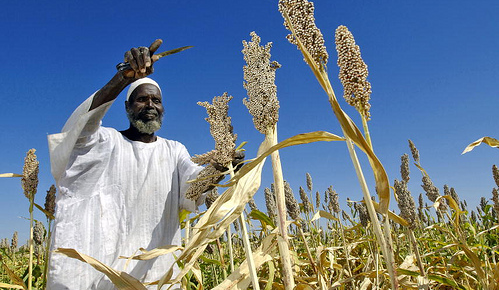
At the UNFCCC COP15 in 2009, developed countries committed to mobilise jointly USD 100 billion a year in climate finance by 2020 to address the needs of developing countries. But Oxfam’s recent report shows that countries are still far away from that target.
Climate-specific assistance is off-track
Using donor reports of public climate finance to the UNFCCC and OECD in 2015-2016, Oxfam shows that, according to donor methodologies, developed countries’ commitment should reach approximately $48 billion. But Oxfam estimates that the real “climate specific assistance” lies between 16 and 21 billion per year, which questions developed countries’ ability to hit the target in 2 years.
Climate relevance of funds is being over-reported
A large part of climate finance is spent on projects in which mitigation or adaptation is not the primary objective but that has climate-related components. There are no guidelines on how to define which parts of a project count as climate finance, and on what proportion of the money spent can contribute to the country’s target: this allows countries to over-estimate the climate relevance of development spending. AdaptationWatch found that three quarters of projects listed as supporting developing countries to adapt to climate change appeared to be overcounted. To resolve the problem, the UNFCCC and OECD should develop clear common guidelines to determine the value of a project’s climate component, Oxfam says.
Loan values are being over-reported
The current practice of most developed countries is to report the full face value – the amount of principal to be repaid – of loans awarded to developing countries. This obscures the level of assistance developing countries receive: market-rate loans, for instance, do not represent a net transfer of funds towards developing countries (unlike grants or concessional/discounted loans). As a result, donors supplying a high amount of loans – such as France, Germany or Spain– can claim credit for providing more climate finance than they are compared to those countries providing mainly grants. For Oxfam, parties should “agree on rules and accounting guidelines under the UNFCCC that ensure countries count the grant equivalent of non-grant instruments towards their UNFCCC obligations”, and “increase the overall share and amount of their grant-based assistance”.
Funding for Adaptation and for Least Developed Countries (LDCs) is insufficient
In 2015-2016, only 20 percent of reported public climate finance was allocated to adaptation, while 71 percent was allocated to mitigation and 9 percent to cross-cutting projects. This, coupled with the fact that only 18 percent of total public climate finance went to LDCs during the same period, shows the gap between the resources developing countries have to adapt to climate change and the increasing risks they face.
LDCs’ ability to attract private investment being limited, and loans being ill-suited to meet the critical adaptation needs of poor and marginalized populations, the grant share of climate finance seems to be insufficient to fulfill LDC’s adaptation needs, even when they bear no historical responsibility for climate change.
According to the report, all developed countries should ensure their adaptation finance reaches a minimum of 50 percent of their overall public climate finance contributions by 2020, and that 25 percent of their public climate finance is dedicated to LDCs by 2018.
The Oxfam report “Climate Finance Shadow Report 2018: Assessing progress towards the $100 billion commitment“.
Read also the article “Scale and transparency of finance is vital for putting Paris climate pledges into action“.


